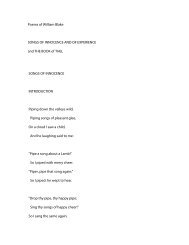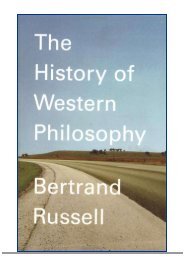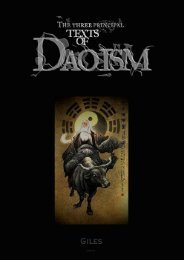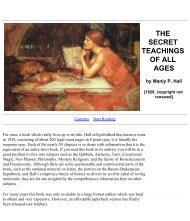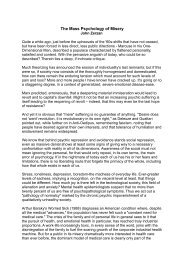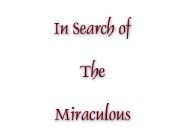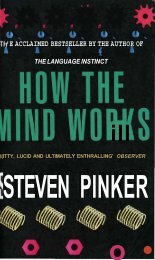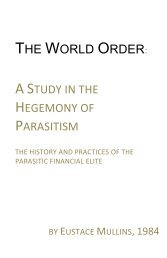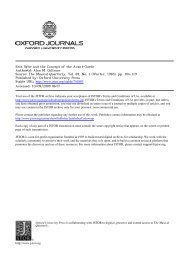The Ever-Present Origin - Michael Goodnight - Editor
The Ever-Present Origin - Michael Goodnight - Editor
The Ever-Present Origin - Michael Goodnight - Editor
- No tags were found...
Create successful ePaper yourself
Turn your PDF publications into a flip-book with our unique Google optimized e-Paper software.
2. <strong>The</strong> Perspectival WorldAlthough already shaped in the Mediterranean world of late antiquity, theperspectival world began to find expression about 1250 A.D. in ChristianEurope. In contrast to the impersonal, pre-human, hieratic, andstandardized sense of the human Body — in our sense virtually nonexistent— held by the Egyptians, the Greek sensitivity to the body hadalready evidenced a certain individuation of man. But only toward theclose of the Middle Ages did man gradually become aware of his body as asupport for his ego. And, having gained this awareness, he is henceforthnot just a human being reflected in an idealized bust or miniature of anemperor, a philosopher, or a poet, but a specific individual such as thosewho gaze at us from a portrait by Jan van Eyck.<strong>The</strong> conception of man as subject is based an a conception of the worldand the environment as an object. It is in the paintings of Giotto that weSee first expressed, however tentatively, the objectified, external world.Early Sienese art, particularly miniature painting, reveals a yet spaceless,self-contained, and depthless world significant for its symbolic content andnot for what we would today call its realism. <strong>The</strong>se "pictures" of anunperspectival era are, as it were, painted at night when objects arewithout shadow and depth. Here darkness has swallowed space to theextent that only the immaterial, psychic component could be expressed.But in the work of Giotto, the latent space hitherto dormant in the night ofcollective man's unconscious is visualized; the first renderings of spacebegin to appear in painting signalling an incipient perspectivity. A newpsychic awareness of space, objectified or externalized from the psycheout into the world, begins — a consciousness of space whose element ofdepth becomes visible in perspective.This psychic inner-space breaks forth at the very moment that theTroubadours are writing the first lyric "I"-Poems, the first personal poetrythat suddenly opens an abyss between man, as poet, and the world ornature (1250 A.D.). Concurrently at the University of Paris, ThomasAquinas, following the thought of his teacher Albertus Magnus, asserts thevalidity of Aristotle, thereby initiating the rational displacement of thepredominantly psychic-bound Platonic world. And this occurred in thewake of PetrusHispanus (PetrusLucitanus), the later Pope John XXI (d.1277), who had authored the first comprehensive European textbook onpsychology (De anima), introducing via Islam and Spain the Aristoteliantheory of the soul. Shortly thereafter, Duns Scotus (d. 1308) freedtheology from the hieratic rigors of scholasticism by teaching the primacyof volition and emotion. And the blindness of antiquity to time inherent inits unperspectival, psychically-stressed world (which amounted to a virtualtimelessness) gave way to the visualization of and openness to time with aquantifiable, spatial character. This was exemplified by the erection of thefirst public clock in the courtyard of WestministerPalace in 1283,an event12



